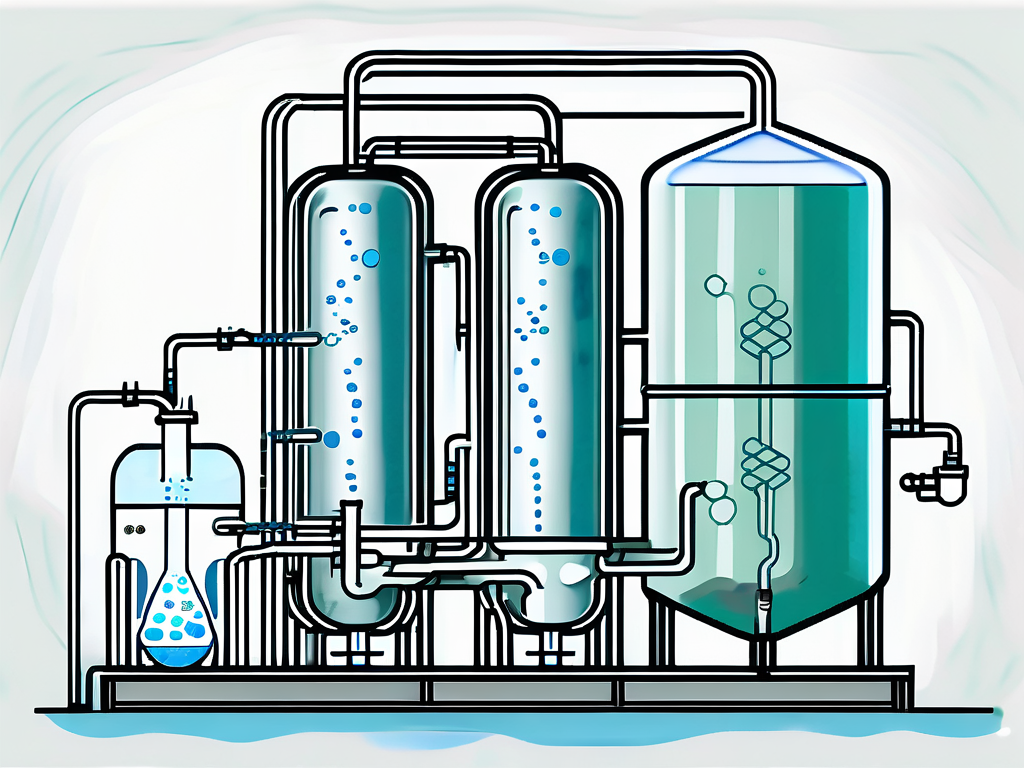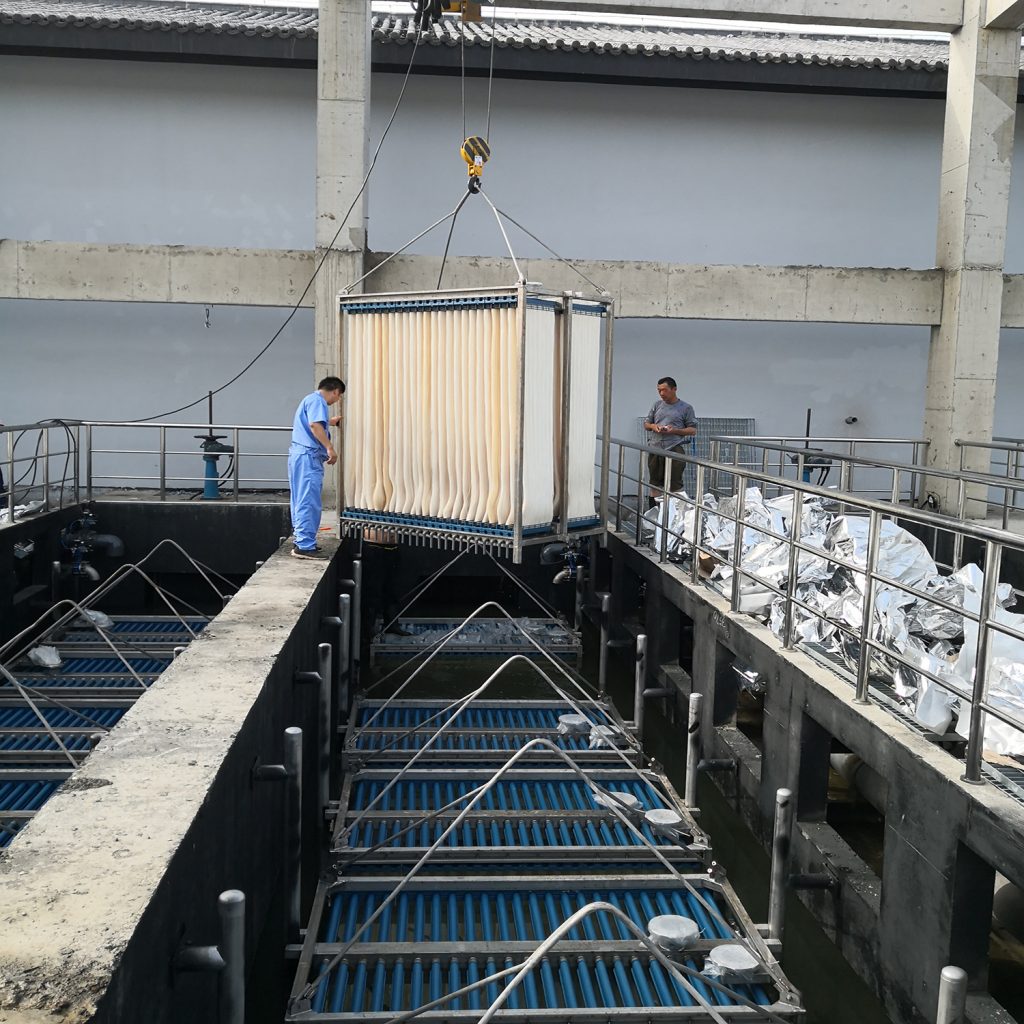Troubleshooting Common Issues with Membrane Bioreactor Systems
Troubleshooting Common Issues with Membrane Bioreactor Systems
Blog Article
Comprehending Membrane Bioreactors: The Future of Wastewater Treatment
Membrane layer bioreactors (MBRs) stand for a notable innovation in the field of wastewater treatment, integrating biological procedures with sophisticated membrane filtration to improve effluent top quality. As global water scarcity and strict governing structures end up being progressively pushing issues, MBR innovation uses an efficient feedback through its ability to minimize footprint and optimize source recovery.
What Are Membrane Layer Bioreactors?

The core components of MBR systems include a bioreactor where microbial task takes place and a membrane layer unit that filters the mixed liquor. This twin performance allows the synchronised degradation of organic matter and solid-liquid splitting up in a solitary step. MBRs can run in both immersed and exterior configurations, with immersed systems being extra typical due to their small layout and operational performance.
The adoption of MBR technology has gotten grip in different applications, varying from metropolitan wastewater treatment to industrial effluent administration. MBRs are specifically beneficial in scenarios where room is stringent or minimal effluent top quality requirements have to be satisfied. By preserving a high concentration of bacteria within the bioreactor, MBRs boost the destruction of natural toxins, thereby producing greater therapy performances compared to typical techniques.
Key Advantages of MBR Modern Technology
The assimilation of biological therapy with membrane layer purification in MBR systems supplies various benefits that establish it in addition to traditional wastewater therapy approaches. One of the main benefits is the improved effluent top quality. MBRs efficiently eliminate put on hold solids and microorganisms, accomplishing greater levels of filtration that satisfy rigorous discharge standards and help with water reuse applications.

One more substantial advantage is the decreased sludge production. MBR systems produce much less excess sludge, resulting in lower disposal costs and a reduction in environmental impact. The shut nature of the membrane layer system reduces the danger of odor emissions and improves total procedure control.
Lastly, MBRs are versatile and versatile, making them suitable for numerous wastewater types, including commercial and municipal resources. The capability to integrate with innovative therapy modern technologies further boosts their efficiency, making MBRs an encouraging option for the future of wastewater monitoring.
Difficulties and Limitations of MBRs
While MBR technology supplies countless advantages, it additionally faces numerous obstacles and limitations that can influence its prevalent fostering. One significant obstacle is the high capital and functional prices connected with MBR systems. The initial investment for membrane products and the needed framework can be substantial, making it less accessible for smaller markets or districts.
In addition, membrane fouling stays a crucial problem that can diminish system efficiency and rise upkeep demands. Fouling happens when solids, raw material, or microbes build up on the membrane layer surface area, causing reduced leaks in the structure and needing frequent cleansing or replacement.
Another restriction entails the complexity of the innovation. MBR systems call for skilled personnel for operation and upkeep, which can be an obstacle in areas with limited technical knowledge. The disposal of invested membrane layers presents ecological problems, as the products are often not biodegradable and can add to waste administration obstacles.
Last But Not Least, while MBRs can successfully treat a vast variety of their explanation wastewater, they may not be suitable for all applications, especially those with high focus of fats, oils, and oils, requiring further study and development to resolve these restrictions.
Applications of Membrane Layer Bioreactors
In various industries, membrane bioreactors (MBRs) have actually become a flexible service for wastewater therapy (Membrane Bioreactor). Their applications extend local, commercial, and agricultural settings, showcasing their versatility and performance in diverse settings. In municipal wastewater therapy plants, MBRs significantly improve effluent quality, enabling water reuse and decreasing the ecological influence of released wastewater
Industrially, MBRs are utilized in food and beverage processing, fabric production, and pharmaceutical manufacturing, where they effectively treat high-strength waste streams. Their capability to deal with varying lots and differing contaminant focus makes them especially beneficial in these sectors. Additionally, MBRs facilitate the removal of pathogens, suspended solids, and organic issue, adding to compliance with strict discharge policies.
In agriculture, MBRs are progressively made use of for dealing with Your Domain Name farming overflow and animals wastewater, allowing the recovery of nutrients for fertilizer manufacturing. They likewise aid in the treatment of greywater for watering, promoting lasting water monitoring techniques.
The adaptability of MBRs is further shown by their combination with various other technologies, such as anaerobic food digestion More Bonuses and advanced oxidation procedures, enhancing overall performance and resource recuperation in wastewater treatment systems.
The Future of Wastewater Treatment
Developments in modern technology and a growing focus on sustainability are forming the future of wastewater treatment. Membrane layer bioreactors (MBRs) exhibit this change by incorporating biological treatment processes with membrane filtering, causing premium effluent appropriate for reuse. The fad in the direction of round economies is prompting centers to adopt MBRs for their capacity to recoup sources, such as water and nutrients, from wastewater.
Innovations in membrane layer materials and arrangement are improving the performance and long life of MBR systems, reducing functional costs and energy consumption. Smart innovation combination, including real-time monitoring and automated control systems, is further optimizing performance and allowing predictive maintenance, therefore minimizing downtime.
Additionally, regulative stress and social expectations are pushing towns and industries to take on even more sustainable techniques. Membrane Bioreactor. The shift towards decentralized wastewater therapy options is gaining grip, enabling for local treatment that minimizes transportation costs and energy use
Final Thought
Membrane layer bioreactors (MBRs) stand for a transformative method to wastewater treatment, integrating biological procedures with sophisticated membrane layer modern technology. The advantages of MBRs, including improved effluent top quality, decreased spatial needs, and lower sludge manufacturing, position them as a sensible remedy amid growing urbanization and stricter environmental laws. In spite of existing challenges, the ongoing development in membrane products and operational approaches assures to reinforce the efficiency and fostering of MBRs, ensuring their essential duty in the future of sustainable wastewater administration.
Membrane layer bioreactors (MBRs) represent a noteworthy advancement in the field of wastewater treatment, incorporating biological procedures with innovative membrane layer filtration to improve effluent quality.Membrane bioreactors (MBRs) combine organic therapy processes with membrane purification to efficiently treat wastewater.The combination of organic treatment with membrane layer filtration in MBR systems offers countless advantages that establish it apart from traditional wastewater therapy methods. Membrane layer bioreactors (MBRs) exemplify this change by integrating organic treatment procedures with membrane layer filtering, resulting in high-quality effluent appropriate for reuse.Membrane bioreactors (MBRs) represent a transformative method to wastewater therapy, incorporating organic processes with innovative membrane layer innovation.
Report this page